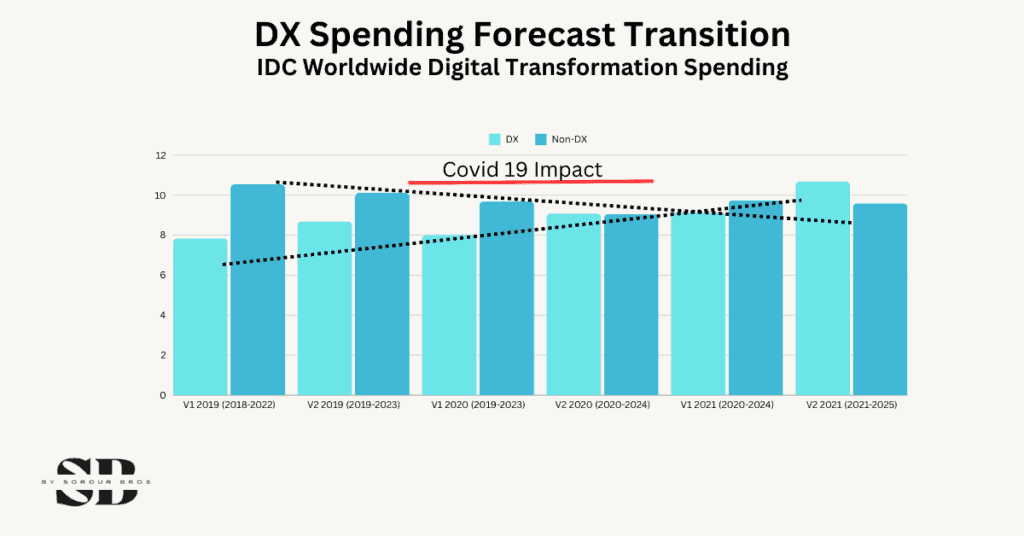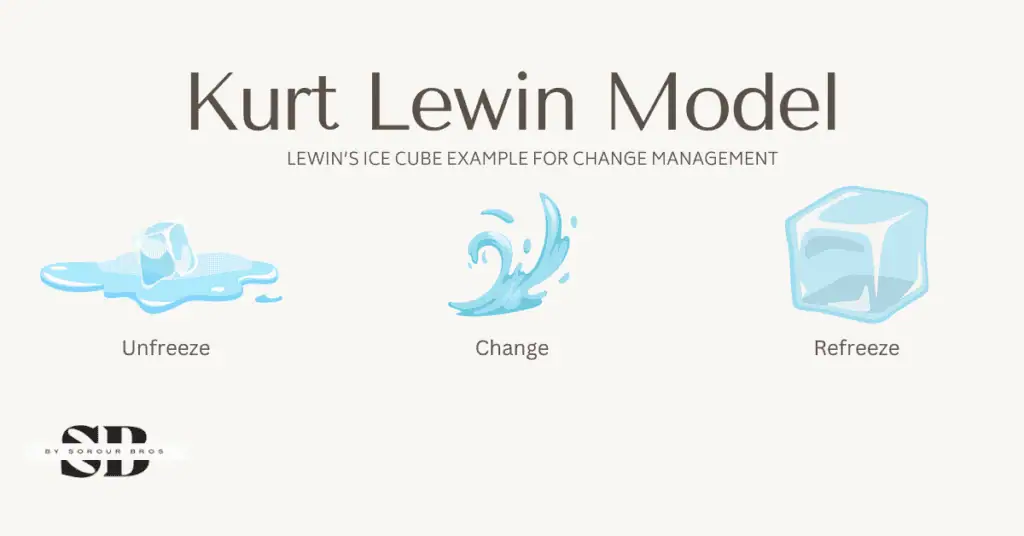The Change Management Process: Ensuring Smooth Transitions

Written By:
Last Updated Date:
TL;DR
Change management process ensures smooth business transitions. Effective managers impact the entire organization in achieving strategic goals. The process involves restructuring for improved effectiveness. Remember, global spending on digital transformation continues to rise!
Key Takeaways
- Change management is so important for organizational growth that you will need it if you want better sales, happier employees, and happier customers.
- Change management in business is inevitable. But what if it could be a smooth transition instead of a jarring disruption, even a guaranteed win? That’s the power of the change management process.
- As a leader, you must learn change management skills. These will help you rise above your competitors and create more satisfaction.
Why Change Management is Critical?
When you manage to change or make organizational change overall, you need to use organizational change initiatives, which should impact the entire organization. And good change managers. And you want it to be a successful change implementation. To reach your strategic goals, you must put in a good change effort to achieve the desired outcomes.
What is The Definition of Change Management?

By Sapijaszka
Change in an organization can be defined as restructuring, Change in at least one of the three dimensions of the organization, Its scope of activities, capital structure or internal organization. Its goal is to increase the organization’s effectiveness by, among other things, ordering and streamlining its structure and improving the quality of its services.
The academic library during the process of change. Change process, disruption and evaluation
Essential Leadership Skills for Change Leaders
Change leaders Must have leadership skills, starting with who they are and what they want to achieve. They should also check that they have a structured process, implement new methods, and work on change projects to make a successful change and transition.
If you don’t know what digital transformation is or what is digital transformation? You can check our article that covers this topic.
According to the International Data Corporation (IDC), global spending on the digital transformation of business practices, products, and organizations is forecast to reach 2.8 trillion in 2025, more than double the amount allocated in 2020 (as illustrated in Fig. 1).

Therefore, it is essential to ask questions about sustainability and resilience in digital technology. Literature analysis shows that changeover, change management, and attention pave the way for a sustainable digital transformation. For more details, see the Importance of Change Management in Digital Transformation Sustainability.
You also should check project objectives, project performance, and customer preferences, Apply good business models, and Have team change efforts applied. Implement organizational change strategies to avoid adverse outcomes and ensure you’ll get positive outcomes.
Why Is Organizational Change Management Important?

Strategies for Success and Benefits
It’s not hard to change, but it’s not that easy too. It needs planning, focusing on risks, and implementing the right strategy. So, if you want increased success rates, better ROI, boosted employee satisfaction and customer happiness and enhanced adaptivity. And for a well-structured organizational change, you need good change leaders to ensure success in the whole change process.
How can implementing change help you?
Do You Want To Make Money Quickly?
We feel you. Money is so important. It’s not everything, but it can buy you new tools and a good employer who does many things efficiently. It can also buy you an incredible, beautiful, happy week on a beach feeling calm. You need money to enjoy your life more.
Do You Want So Much Adaptability?
If you want to feel more productive and adaptable, you can make changes, and at the same time, the company stays agile. Even better, a good strategy needs good change initiatives.
Do You Want To Get Better Satisfaction?
You want to feel better about your company and get little problems; I know there can’t be any problems. Issues are good and teach us a lot, but they will return to our lives if we don’t solve our problems efficiently.
Do You Want To Get On Top Of Your Competitors?
It’s essential to be on top. It’s a race. When you get to the top, you’ll have more to show. If you want to be on the top for the long run, you need a perfect strategy And perfect skills to face the challenges.
How Change Management Impacts an Organization?

The Essentials of a Good Change Strategy
A Good Change Strategy Should Combine
- People-oriented
- An institution-oriented
Remember that the combination of these actions is supposed to ensure alignment of mission and vision and respect for your organization’s growth.
When you apply change management, it has many effects on the whole organization. Such as improved communication, reduced stress, enhanced productivity, morale, creativity, and decision-making.
What Is the Change Management Process?

Navigating the Change Management Process
The change management process is like navigating a ship through rough waters – you need a clear plan, a skilled crew, and the ability to adapt to unexpected currents. It’s a structured approach to guide individuals and organizations through transitions, big or small. Here’s a breakdown of the key steps:
- Define the Need for Change
- Develop a Change Management Plan
- Assemble a Change Management Team
- Communicate Effectively
- Empower and Engage Employees
- Monitor and Adapt
- Celebrate Success
Best Change Management Models

Understanding Key Change Management Models
Kurt Lewin Model
We can understand the successful organizational change management of Kurt Lewin in the 1940s. His model is known as Unfreeze – Change – Refreeze.
It’s called the three Changes of Change. Lewin, a physicist, and a social scientist, Changed change in organizational culture using the analogy of changing the shape of a block of ice; if you have a large cube of ice but realize that what you want is a cone of ice, what do you do? First, you must melt the ice to make it amenable to change (unfreeze). Then, mold the iced water into your desired shape (Change). Finally, it would help if you solidified the new shape (refreeze). (as illustrated in Fig 2)

John Kotter Model
- Establish a Sense of Urgency: Create awareness about the need for change.
- Form a Powerful Coalition: Assemble a team of influential leaders to drive the change.
- Create a Vision for Change: Define a clear and inspiring vision for the future.
- Communicate the Vision: Share the vision with all stakeholders.
- Empower Action: Remove obstacles and empower employees to take action.
- Generate Short-Term Wins: Celebrate small victories to build momentum.
- Consolidate Gains and Produce More Change: Reinforce the change and continue progress.
- Anchor New Approaches in the Culture: Embed the organizational culture changes.
The above considerations significantly impact the change.
Why Does Change Management Strategy Fail In The Organization?

Addressing Key Challenges in Change Management
Most business leaders need to pay more attention to the fact that large-scale change is changing more than technology (it is about people). Although a new approach to successful Change management is required to develop the framework for sustainable digital transformations, These imperatives have formed the cohesive Change Management Framework: Leadership, Communication, and Inclusion. (As illustrated in Fig 3)

By Chris ArgyrisAn expert on organizational learning and Change
Identified the concept of organizational defensive routines (ODRs): “Defensive routines are thoughts and actions used to protect individuals’, groups’, and organizations’ usual way of dealing with reality.” They act to buffer individuals and/or organizations from threats from the environment.
Theories In Action
Faced with the unchanging, people will do whatever is needed to maintain the status quo and resist the efforts of those trying to create reality.”
The reality in organizations is that 70% of all changes fail. Rick Maurer discusses this issue in his book Beyond the Wall of Resistance: Why 70% of all organizational changes still fail and what you can do about it.
1- Do you need to lead change more effectively?
When you Hear the term “Change,” you don’t know everything about it. You must attend training, listen to motivational speakers, and learn how to apply changes from a consultant. That’s how you can put the knowledge you gained into practice. You need good change management and use a good change team to succeed.
2- Do you underestimate change challenges?
When you see a challenge And when you plan your change management strategy. You need to plan your mitigation strategies for the overall business structure, especially essential ones; this process is necessary if you want great business outcomes and growth.
3- Do you believe a good idea will naturally succeed?
Even a great Idea requires a lot of planning and effort and an excellent strategy to Change. You also need to establish good business practices.
4- Do you think that you can force people to change?
Think about it when organizational changes occur. This will improve your entire organization and save time. It is essential to know the critical changes and how they affect you.
5- You prioritize “How” Over “Why”?
It’s not about asking why we change. It’s much better to ask how I will change, what strategies, and which tools. But only spend a little time on this stage if you want to improve. Please don’t focus only on the process; also think of customers, how I can make them happy, and how I can be creative to satisfy them.
6- You ignore complexity?
Change management is a complex process, but it becomes much easier to implement with the right tools and methods. However, remember to plan a perfect strategy and focus on the external market as much as possible.
7- Do you underestimate resistance?
When you don’t change, Change becomes discouraged or frustrated. Moreover, you will need a plan to address it. The better you plan initially, the more ready you’ll be for any issue.
8- Do you need to gain the skills?
Focus on more than just some significant steps; focus on many of them. The more you do, the better results you’ll get. If you want to be ahead of all your competitors in the long term, you must acquire more skills to have an advantage.
9- Are you immune to changing your organization for the better?
When you start to change quickly, you get more customer satisfaction, opportunities for new ideas, and flexibility to adjust strategies.
Conclusion
We discussed business processes a lot here. A good business process requires good project managers, change managers, change initiatives, continuous improvement efforts, and a well-structured approach.
To make a successful migration strategy, you should remain relevant and enable success metrics on the new system. Employee engagement and a good change process are also important. Project managers should effectively communicate within the organization, use the needed resources, learn from previous attempts that went wrong, and track progress.
Frequently Asked Questions (FAQ)
I’m a Data Enthusiast and Content Writer with a passion for helping people improve their lives through data analysis. I’m a self taught programmer and has a strong interest in artificial intelligence and natural language processing. I’m always learning and looking for new ways to use data to solve problems and improve businesses.






